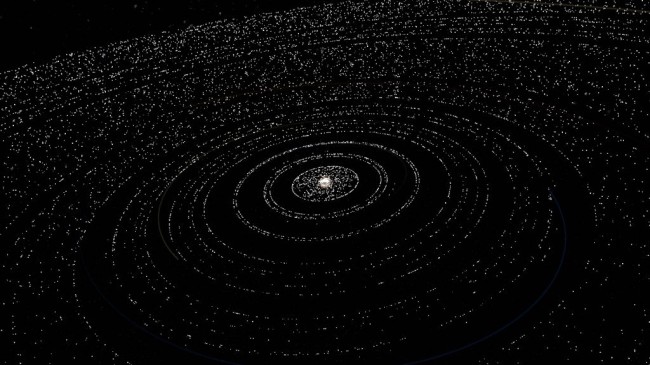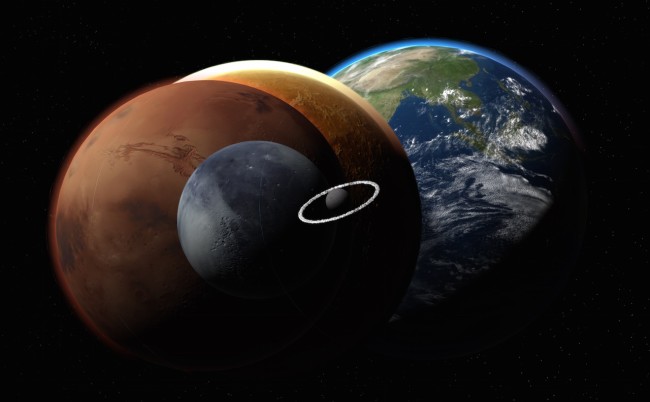Archive for April, 2014
Orbital Resonance in Universe Sandbox ²
Apr 8th
Universe Sandbox ² is as much about breaking the rules as it is following them. This is why you’re given the ability to add Saturn-like rings to any body, whether it’s Earth, Mars, or even the Sun. And it’s also why we allow you to put in all kinds of interesting but unrealistic shapes for the ‘rings,’ like spirals and cubes. But, of course, we are also committed to incorporating and simulating as much science as we can. So we’ve included resonance gaps.
The basic idea here is that a larger body, like a moon (in the case of a ring around a planet), or a planet (in the case of rings around a star) creates gaps, or resonances, as seen in the picture above.
Here’s how it works (and for simplicity’s sake, just imagine circular orbits): According to Kepler’s third law, the distance an object is away from the planet determines how long it takes to orbit. That means that for an object at a given distance (and orbital period), there must be a distance where the orbit takes only half the time, and another distance that takes three times as long. Whenever the two orbits take integer ratios of each other, we say the orbits are in resonance. For example, if the moon takes 28 days to orbit, there is a distance that only takes 14 days to orbit. This would be the 2:1 resonance (two orbits for every one orbit of the moon). If there is a disk present, and there is material at that distance, then every other time the material in the disk orbits, the moon has gone the whole way around, and the disk material comes as close to the moon as it can get — basically they are in the same part of their respective orbits. Each time that happens, the moon’s gravity pulls on the material just a little bit. For certain ratios of orbit periods, this little extra pull will clear the material out of that particular orbit. It’s really an amazing process that takes a fair bit of time to occur. But we see it in Saturn’s rings and we see it in the asteroid belt, where resonances with Jupiter have cleared out gaps (the Kirkwood gaps). And here is a great little animation showing resonance in Jupiter’s moons.
We calculate a handful of unstable resonances (3:1, 5:2, 7:3, 2:1, 7:6, and 1:1). So when you’re playing around with Universe Sandbox 2, and you include resonance gaps, you’ll see these rifts in the rings. If you select the Sun and try to add rings, we find the planets that orbit the Sun, compute the resonances, and put gaps there, as pictured above. It’s pretty slick, if I do say so myself.
This feature includes the gaps when a ring is placed around an object. But Universe Sandbox is a gravity simulator, and this is a gravitational process. In principle, the gaps would develop on their own if you let the simulation run long enough. In practice, though, the simulation would need very, very high precision and to run for a very, very long time, and until we are running Universe Sandbox on a supercomputer, ring gaps won’t develop spontaneously.
You can also place your own rings by specifying the inner and outer boundaries of a single ring. So you could build up a single ring system with gaps anywhere you’d like them to be. We hope you have fun playing around with this feature when we make Universe Sandbox ² available for purchase. I sure had fun coding it up.
In other ring-related news, it was announced last week, to everyone’s surprise, that an asteroid in our Solar System called Chariklo has 2 rings. Here it is in Universe Sandbox ²:


